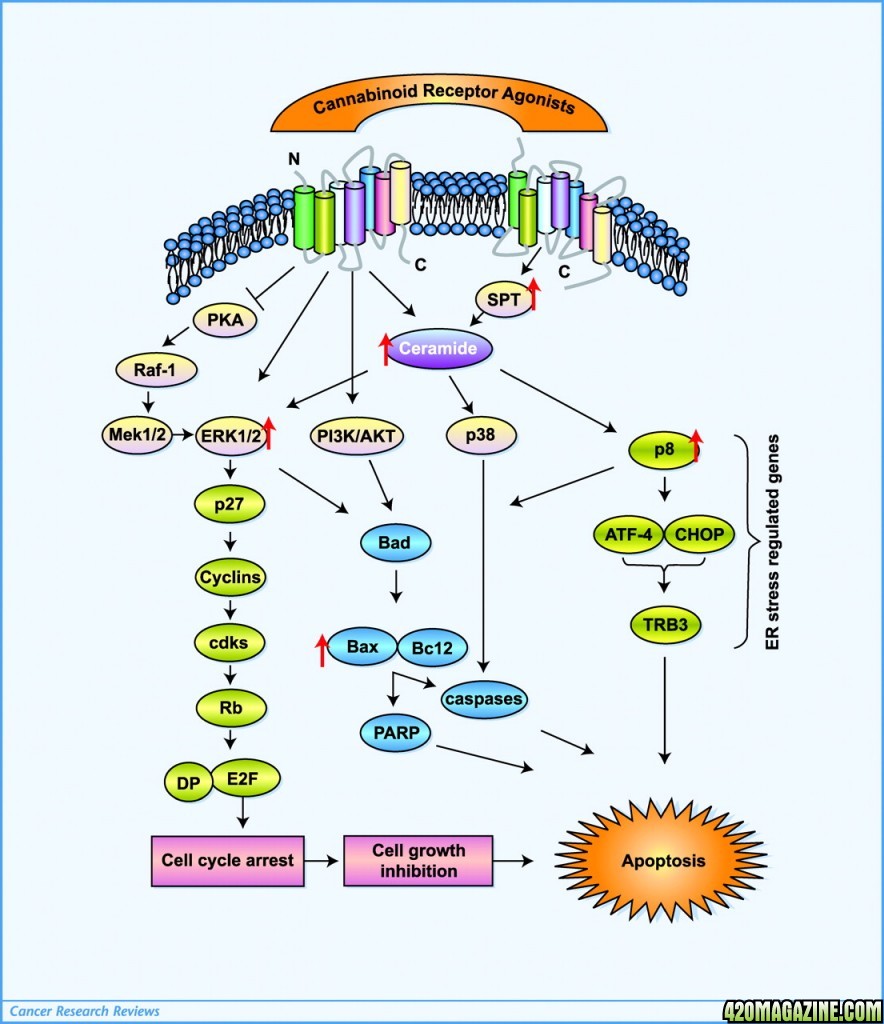Hey, Scottay! Welcome to the party!

A nerd, eh? Well, here's a little something to test out your nerd quotient. Help me decipher this:
That's a helluva flow chart, right there! But it's important, so we need to tease out an understanding. It came from this
Journal of British Pharmacology article. This article gives the best overview I've seen yet on exactly what the endocannabinoid system is, and how the phytocannabinoids (THC, CBD, etc.) work to signal other enzymes and compounds to attack tumorous cell growth in the following ways:
- Inhibition of cell proliferation and migration
- Induction of apoptosis
- Reduction of tumour growth
Note the new player in the receptor landscape. Along with CB1 and CB2, we now have GPR55 (G-Protien Receptor 55) that works to provide a signaling pathway to arrest cancer cell proliferation (CB1 & 2 are actually G-protein coupled receptors as well) . Still need to figure out what TRPV1 does in the big scheme of things (but he looks to be helping kill cancer so props to you, my friend). And apparently the endocannabinoid system consists of lipid-signaling molecules generated in cell membranes that bind and activate the various receptors. I need to study this article further, but the system is starting to make sense. And I could use some help. I know we can count on fookinel to join in, but we could sure use another set of eyes, Scottay!













 +reps!
+reps! 




